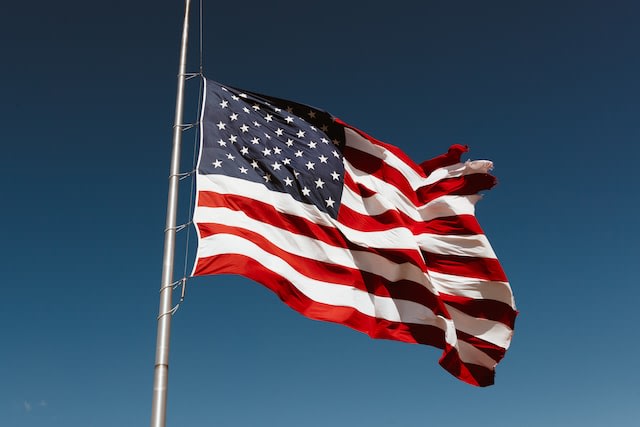Digital PR
10 Key Differences Between US and UK Digital PR
Outreaching your new sparkly campaign to American journalists can seem daunting if you’re not familiar with the market, and your desired contacts are on a completely different time zone. As an agency, we’re not based in across the pond, but we typically split our digital PR activity equally between America and Europe.
From years of links, emails, and campaigns we’ve picked up on a few things that would be extremely useful to anyone looking to launch a new campaign in the US. Here are the 10 key differences between American and British digital PR you should know.
1. HARO is the 🐐
HARO (Help a Reporter Out) isn’t exclusively an American platform, but the UK usage of it is weak. Our own quick analysis shows that typically around 1 in 50 requests on the platform are for British publications (this is from reviewing one month’s worth of HAROs).
If you’re after some quick reactive link opportunities in the US, HARO is your best bet. When compared to something like ResponseSource or #JournoRequest on Twitter, HARO typically has shorter deadlines, more diverse opportunities, and far lengthier requests.
If done right though, you can use HARO to land some killer links, we’ve landed coverage in VICE, Forbes, Fast Company, TIME, and Business Insider, to name but a few.

2. #JournoRequest is not used much 🐦
JournoRequests are one of my favourite digital PR tactics, and they can work for American PR, but you’ll find there are far fewer queries for you and your clients and you’ll often need to be responding on their time, which naturally can be late for European PRs.
How much do American journalists use #JournoRequest?
I took two random 24-hour periods of #JournoRequest over two weeks and found that an average of 17% of the tweets are from US writers, with the vast majority being UK-based journalists.
If you’re not finding any luck with HARO or #JournoRequest, I advise adding Qwoted or Terkel to your mix.
3. Sharing contact info is better 🕵
It’s fair to say that journalists in the UK aren’t the most forthcoming with the old email address. Secretly, I think PRs enjoy the chase of finding the email but that’s another story.
In the US I’ve found it consistently more common for journalists to put their email in their author bio, on their portfolio site, in their Twitter bio, and on 3rd party content feeds.
If you’re looking for more tips on outreaching to journalists, see our beginner’s guide for contacting journalists.
4. Syndication is bigger ↗️
It’s always a pleasure to watch your campaign boom around different regions, putting your idea (and client) into new cities and towns everywhere.
While hundreds of syndicated links may not give you that desired ranking increase for your ongoing SEO efforts, they can drive traffic and help get your story in front of new eyeballs, both public and journalist alike. It’s important to say that syndication isn’t always equal, some of it is of little value but it’s worth tracking and reviewing either way.
In the states, it’s very common to see your campaign get thrown around a few metropolitan areas and across a variety of the 52 states. Which takes me onto my next point…
5. Local press provides more opportunity 🦅
You may have heard of the Florida Man challenge, if you have, you’ve already got a keen insight into US local press.
Weird local crimes aside, stories with a local angle will have a greater impact in the US than the UK. This could be partially due to the geographical advantage (there are a lot of people and towns and cities in the US) but is also about how local press seem to pick up local angles a little easier and more often than in the UK.
Despite this increased opportunity, it’s worth noting that regional press is not synonymous with state press. It’s more common for outlets to focus on local metropolitan areas or small towns. The news they do publish about their state is often tied to state government or is outrageously newsworthy.

6. Local radios can be a goldmine 📻
As local press provides a bigger opportunity, it’s no surprise that local radios would follow suit. As a Digital PR you’re often measured on links, therefore a radio spot is unlikely to be of much use to you. However, they write about local news as good as any other local publication and there are so many stations around the country.
You’ll want to find who is writing the stories for the online news section of the station and get in touch directly. Plus, it’ll be an added bonus if your story gets some air time as well as a written feature.
7. US journos are more friendly when replacing links 🔗
Whether it’s fixing broken links, or asking journalists to properly cite their sources and turn an unlinked mention into a linked one, no link building tactic leads to 100% links, anyone that says they do, is either lying or buying links (probably both).
Anecdotally, I’ve found the response for link insertion/reclamation to have a much higher success rate with US webmasters and journalists. I thank you all for fixing and citing your sources correctly it does not go unnoticed.
8. The right-wing press is louder🔊
I doubt there are many PR campaigns out there solely aimed at right-wing (or far-right😬) press, but in the states, there are a lot of them, they’re very active, and PRs should be aware of their influence in the media.
Whether it’s a political blog or a large news outlet, they love a discussion and they will link out to your source if you’ve provided them with some interesting data. There are definitely equivalent outlets in the UK, but their collective online power in the US is quite something.
We’ve done a lot of campaigns using American financial data and that naturally attracts discussions across the political spectrum. In this case, reviewing the coverage before sending to the client is essential.
9. Freedom of Information requests (FOIs) are not easy ⛔
To put it simply, FOIs are not the same quality as in the UK and will take a lot longer if you do want to look into them. They’re sadly currently a tough sell unless there’s an eventual overhaul of the system, which I can’t see happening any time soon.
I do want to say that they can be done but I’d focus on one organisation and one request. Sending FOIs to multiple organisations across hundreds of cities is a good way to get a headache.
10. LinkedIn outreach is OK 👍
With a lot of the journalists not being on Twitter like UK journos, you may end up doing more LinkedIn pitching as a counter. I should state this isn’t my preferred option, and for some writers can feel invasive.
When I do, I usually give them a little taster of the story in the connection message and see where the conversation goes. Sometimes you might even get recommended a better contact at the publication, or another outlet – wholesome, yet useful, thank you, journalists. ❤️️
What do you think? Have you found any of these when working with American journalists? Am I way off the mark in your experience? I’m keen to hear your thoughts! Let me know on Twitter @DriscollDigital or if you fancy trying some LinkedIn outreach, you can find me here.








